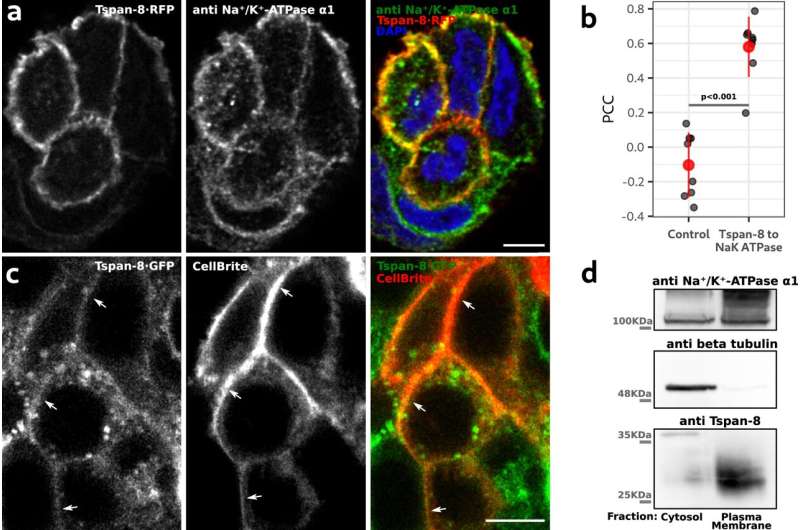‘Traffic control’ system for mucin and insulin secretion identified

Researchers from the Center for Genomic Regulation (CRG) in Barcelona have published a study in the journal Nature Communications that reveals how cells carry out the controlled release of mucins and insulin, two crucial proteins for human health.
Mucins, the main component of mucous, form a protective barrier and lubricant on our body surfaces such as the respiratory and digestive tracts. Humans secrete roughly one liter of mucins per day, which are released by specialized cells in a controlled manner to ensure the right quantity for proper bodily functions.
“An imbalance in mucin secretion, whether excessive or inadequate, can lead to respiratory and digestive tract diseases ranging from chronic obstructive pulmonary disease (COPD) to ulcerative colitis,” says José Wojnacki, first author of the study and postdoctoral researcher at the Center for Genomic Regulation “Similarly, insulin, a hormone secreted by the pancreas, is instrumental in the regulation of blood glucose levels. Defects in insulin production are the root cause of diabetes,” he adds.
Cells store proteins like mucins and insulin in sacs or “granules.” When the cell needs to release these substances, the granules attach to the cell’s outer layer, the membrane, and release their contents outside. The study found that a protein known as tetraspanin-8, present on the cell membrane, acts like a gatekeeper during secretion, deciding which granules containing mucin or insulin get to attach to the membrane and when.
The study demonstrates that the regulated secretion of mucins and insulin is biphasic, meaning a first rapid release of pre-docked granules is followed by a second, slower release of granules from a reserve pool. The study also shows that fusion of granules loaded with mucins requires a protein called syntaxin-2.
Tetraspanin-8 sequesters syntaxin-2, limiting the amount of mucin release. In the absence of tetraspanin-8, the researchers observed a doubling of mucin secretion, as more syntaxin-2 is available for the docking and fusion of granules. This discovery also extended to insulin release, indicating a universal mechanism that could have significant implications for understanding how cells secrete these vital proteins based on physiological needs.
“If the cell is a busy city, the granules are lorries loaded with cargoes like mucins and insulin. The city’s gate to the outside world is opened by proteins like syntaxin-2. In this analogy, tetraspanin-8 works like traffic control at the city’s boundary, controlling the number of syntaxin 2 molecule available to open gates for lorries to dock and export their cargoes. This controlled management ensures just the right number of mucins or insulin is released based on bodily needs,” says ICREA Research Professor Vivek Malhotra, corresponding author of the study and researcher at the Center for Genomic Regulation.
“Tetraspanin-8 is an easy target for developing chemicals to control its function and therefore a means to reset deregulated mucin and insulin secretion noted in the associated human pathologies,” adds Dr. Malhotra.
The researchers are now working to test the role of tetraspanin-8 in more advanced models that represent the complex physiology of the colon, airways, and pancreas to understand the influence of other cells that may co-function to control the net secretion of mucins and insulin.
More information:
José Wojnacki et al, Tetraspanin-8 sequesters syntaxin-2 to control biphasic release propensity of mucin granules, Nature Communications (2023). DOI: 10.1038/s41467-023-39277-9
Provided by
Center for Genomic Regulation
Citation:
‘Traffic control’ system for mucin and insulin secretion identified (2023, July 3)
retrieved 3 July 2023
from https://phys.org/news/2023-07-traffic-mucin-insulin-secretion.html
This document is subject to copyright. Apart from any fair dealing for the purpose of private study or research, no
part may be reproduced without the written permission. The content is provided for information purposes only.
For all the latest Science News Click Here
For the latest news and updates, follow us on Google News.

